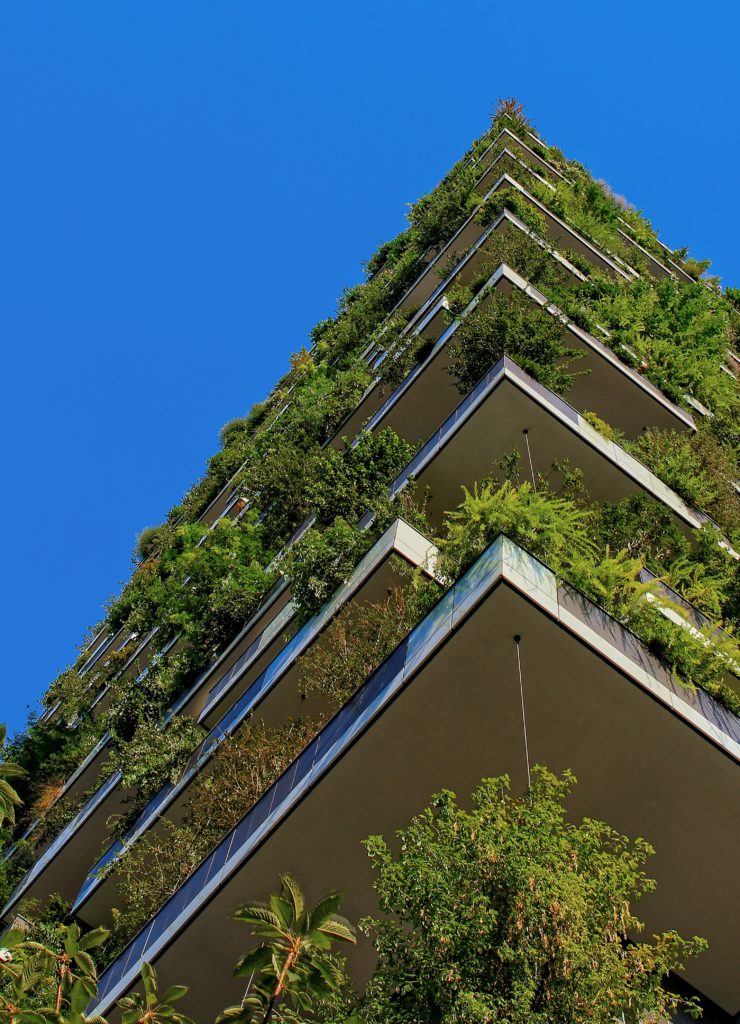
What is Landscape Sustainability?
As green initiatives and a consciousness of our finite resources we have on this earth grow, it is important for individuals to do what they can to contribute to the sustainability of their environment. Sustainability is a landscape design implementation that focuses on the conservation of water and energy. This can be achieved by incorporating proper usage of native plants and climates in order to leave the least amount of impact while also maximizing your use of green space and still being happy with your yard! (A more specific example of landscape sustainability would be Xeriscaping)!
Is Landscaping Good for the Environment?
Most modern landscape designs aren’t generally created within the context of the homeowner’s environment. These designs will often require plenty of watering and maintenance in order to keep up with appearances, which can create a heavy impact on both the area you live in as well as your pocketbook. Some yards can, in fact, be detrimental to your area and create headaches for all involved.
Typically, a good landscape design will incorporate local flora and be mindful of the climate and soil types of the area. A landscape should work together with its environment, and ultimately, in most ways, be able to support itself and “let nature take its course.”

What are the benefits of sustainable landscaping?
A sustainable design must be “functional, cost-efficient, visually pleasing, environmentally friendly and maintainable.”
As the name implies, these designs can be sustained easily for long amounts of times. Proper planning will make for less maintenance, as well, and can really contribute to using less water overall. Sustainable landscape designs are mindful of rainfall and weather patterns so that they can be properly irrigated and tiled, making puddles and runoff a non-issue. As well, fertilizers and pesticides shouldn’t be required in most circumstances.
The sustainability of your garden hinges on acknowledging limited resources, reducing green waste, and relying on proper technique in order to reduce and eliminate pollution of the air, water, and soil of your yard.
5 Sustainable Landscape Practices

Go Green!
Stop using power tools to get the job done. Switch to manual tools if your yard is small enough, or go electric if you can. Burning gasoline just adds fuel to the fire and contributes to air pollution. Plus, why pay $4 a gallon for gasoline when it could cost you that same amount to run an electric mower for a year?
Use Eco-Friendly Materials
Be mindful of reclaiming old timbers and wood, many of these “vintage” materials contain creosote and other chemicals that can leach into your soil and make it harder for your plants to grow. Also, if you plan to irrigate or install lights, opt for non-PVC piping and solar lights, respectively. Not only will you save power directly by powering your lights with the sun, you will also help drive down demand for PVC, which is a very non-eco-friendly material to produce.
Mind Your Soil
Instead of using chemical fertilizers, just cut your grass at a longer length. Typically, 3.5” is a good length to keep your grass at so that weeds don’t have anywhere to grow and so the grass roots can stay nice and protected from the elements. Furthermore, don’t worry about bagging your clippings. Let them sit and decay and incorporate into your soil providing much needed nutrients and fertilization. And, for the truly adventurous, you could even start your own compost pile to help fertilize your flower and plant beds!
Create a Proper Flow
Most yards suffer from improper drainage and irrigation, leading to soft or dead patches and other headaches. Ensure proper tiling that runs the water into your yard and distributes evenly, and shy away from designs that depend heavily on concrete. Slabs of concrete patios and walkways can create all sorts of drainage issues, while sustainable surfaces rely instead on pea gravel, mulch, and sand in order to create porous surfaces.
Plant Smart
A sustainable landscape will use plants that are native to the area. To be sustainable, you will want plants that do not require much attention or watering in order to thrive. As well, you will want to be mindful of invasive species to the area, which can quickly stifle and kill your plants before you know it. You can consult the EPA for a list relevant to your area.
Alternatively, if you’re tired of mowing and dealing with grass altogether, you could try alternatives such as moss, meadow grass, or a succulent garden!

How Can I Make My Yard Eco-Friendly?
The best way to start is to start at all. Start small. Follow some of the advice above, or all of it. Do some research of your own, even! But, if you’re rearing to go and overhaul your yard to become beautiful and sustainable and maintenance free, you should consider hiring a landscape designer in order to maximize your sustainability. Landscape Architectural’s designs cover a wide range of desires; sustainability being one of them. So, if you’d like to know how to make your yard more sustainable, please check out what we have to offer!
